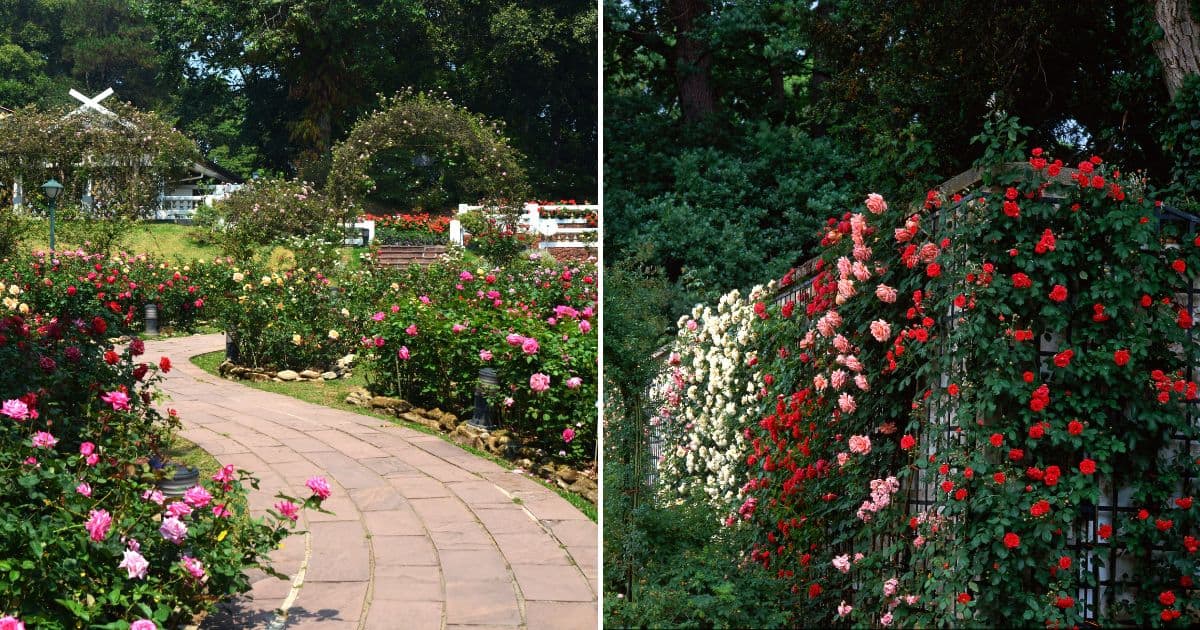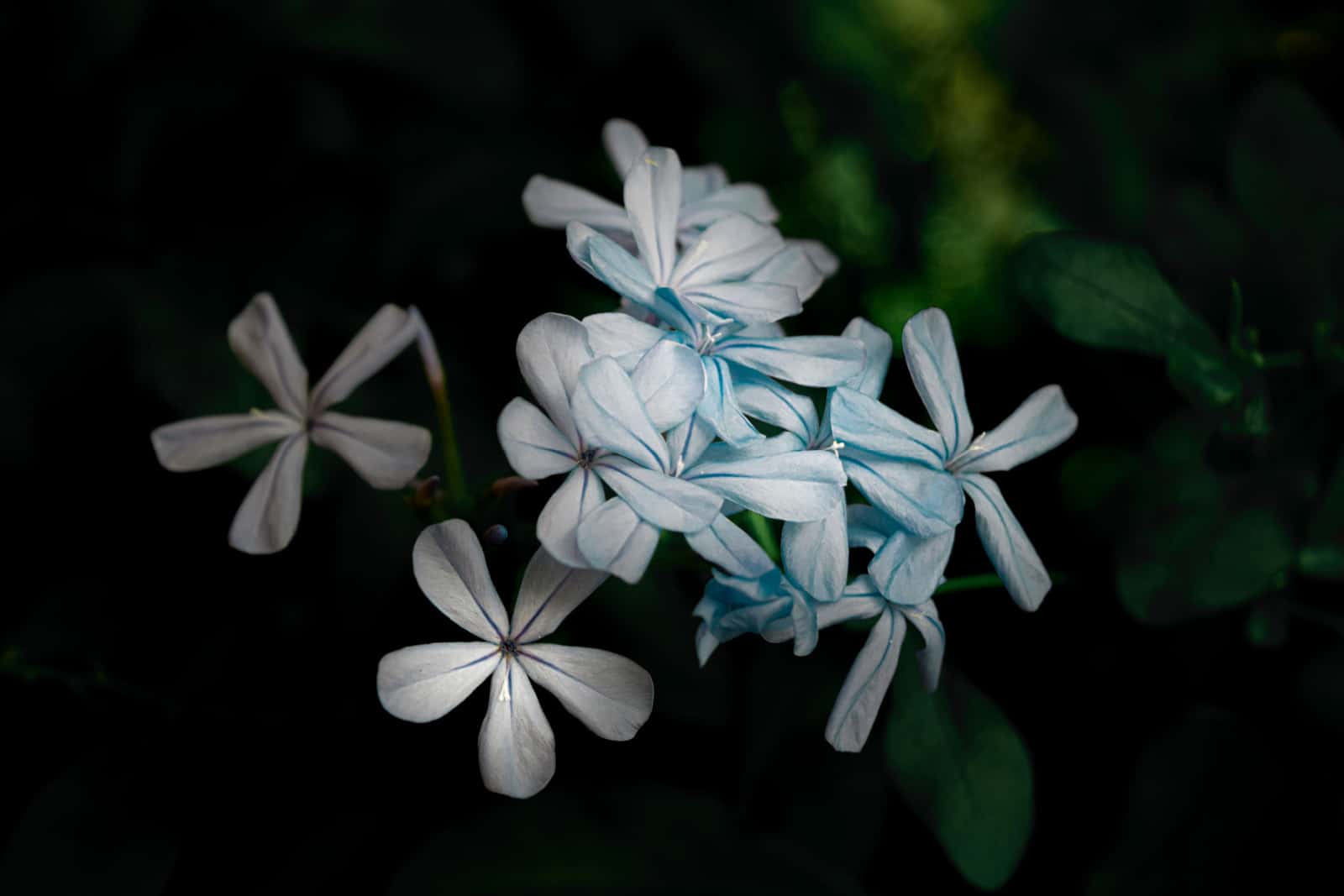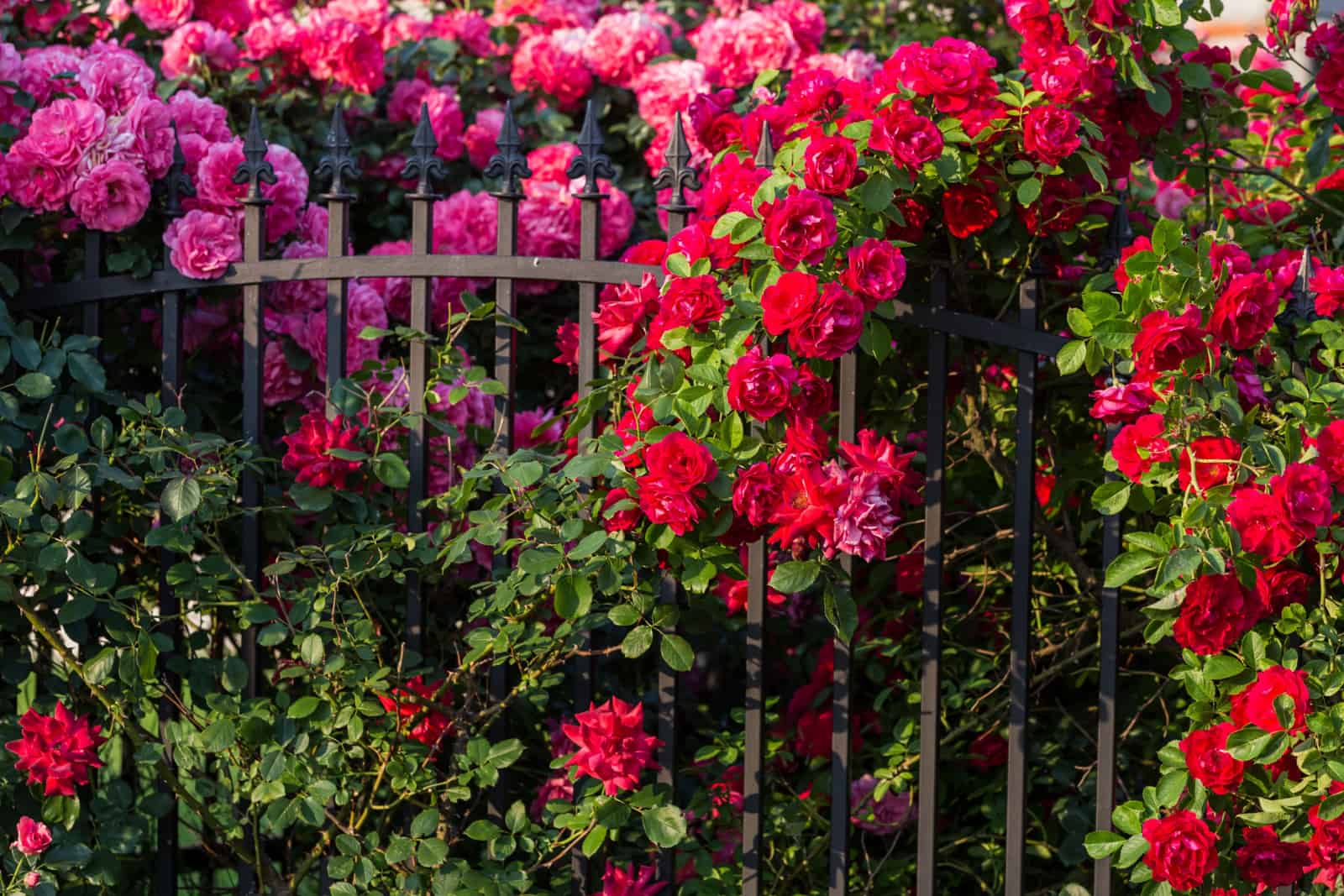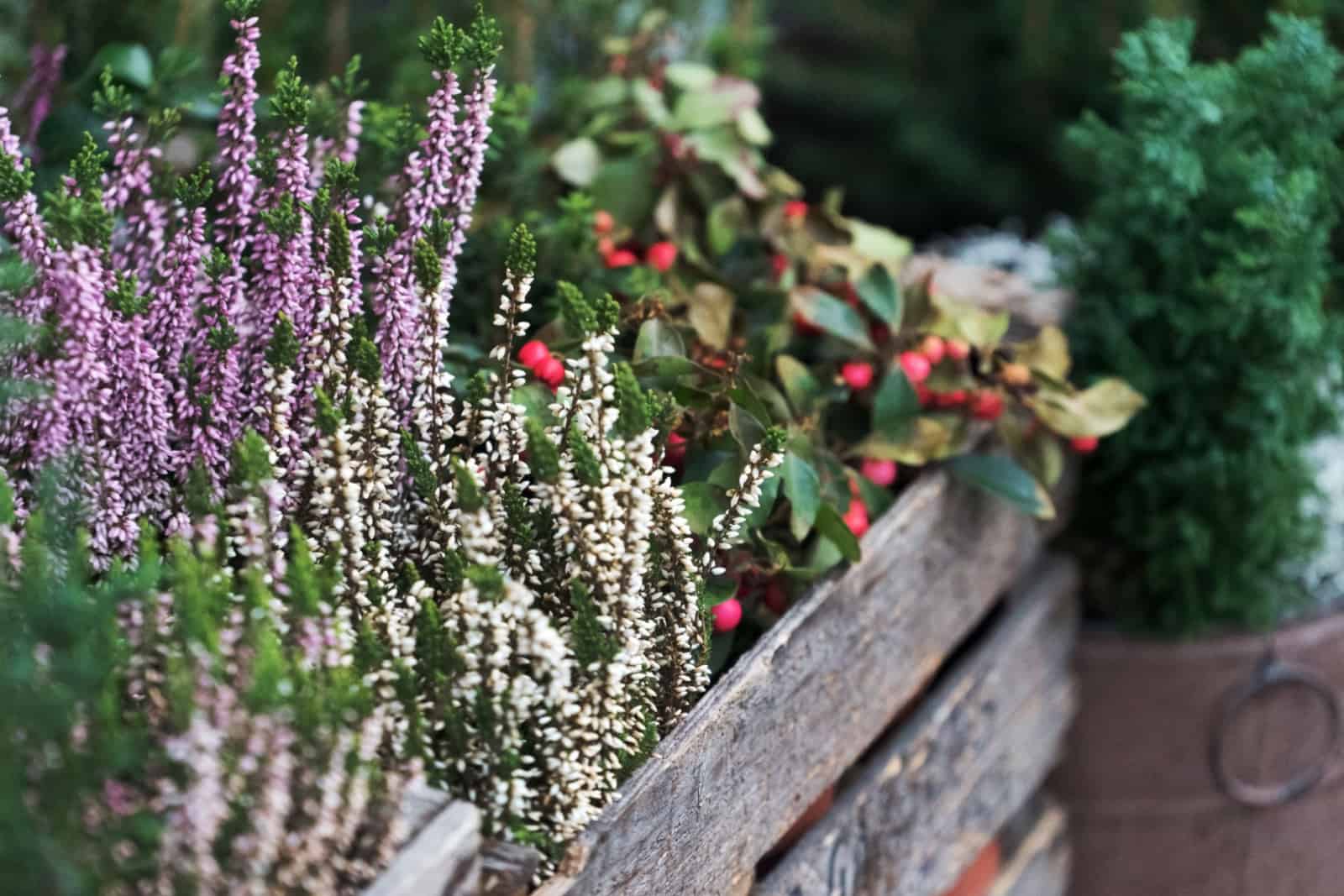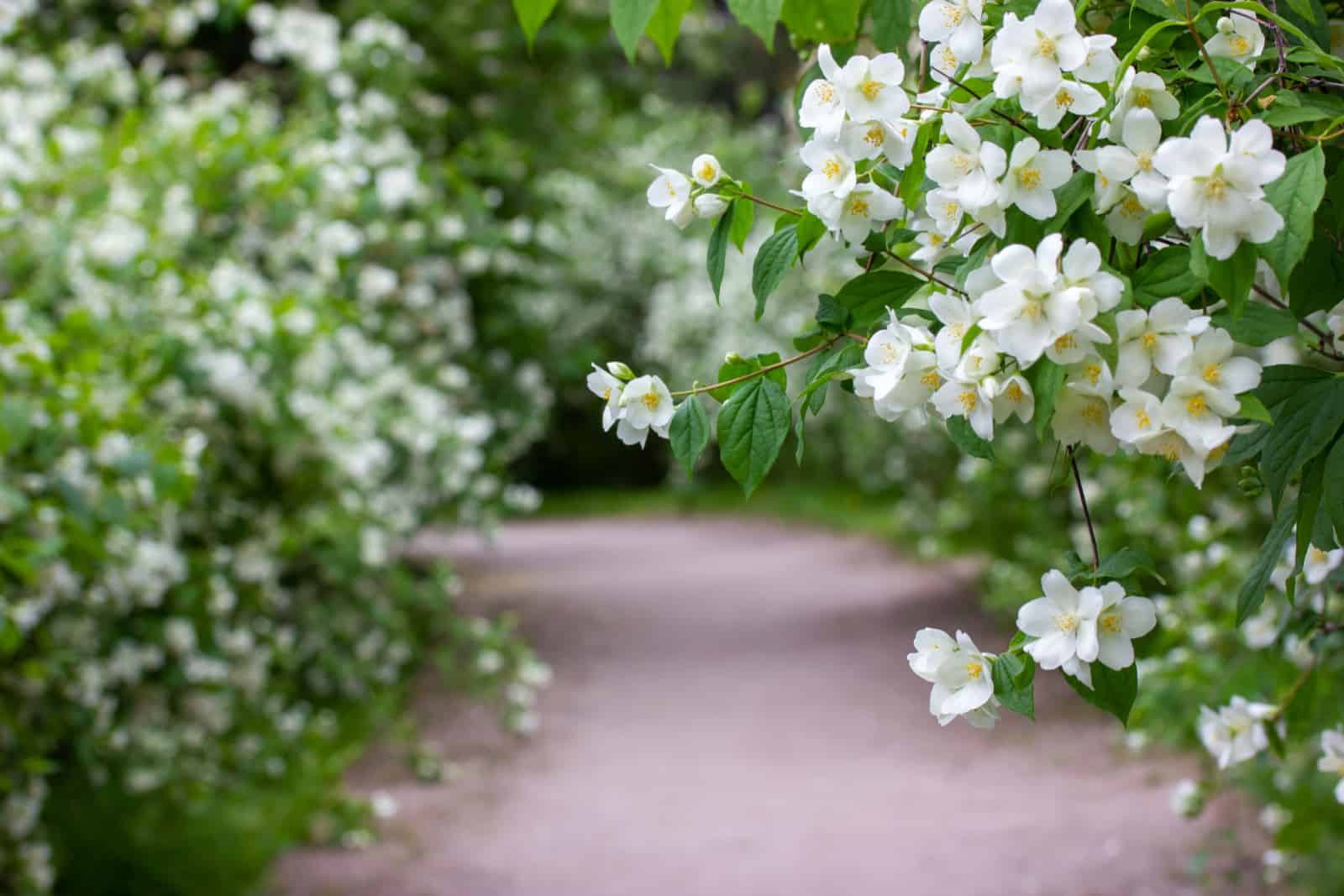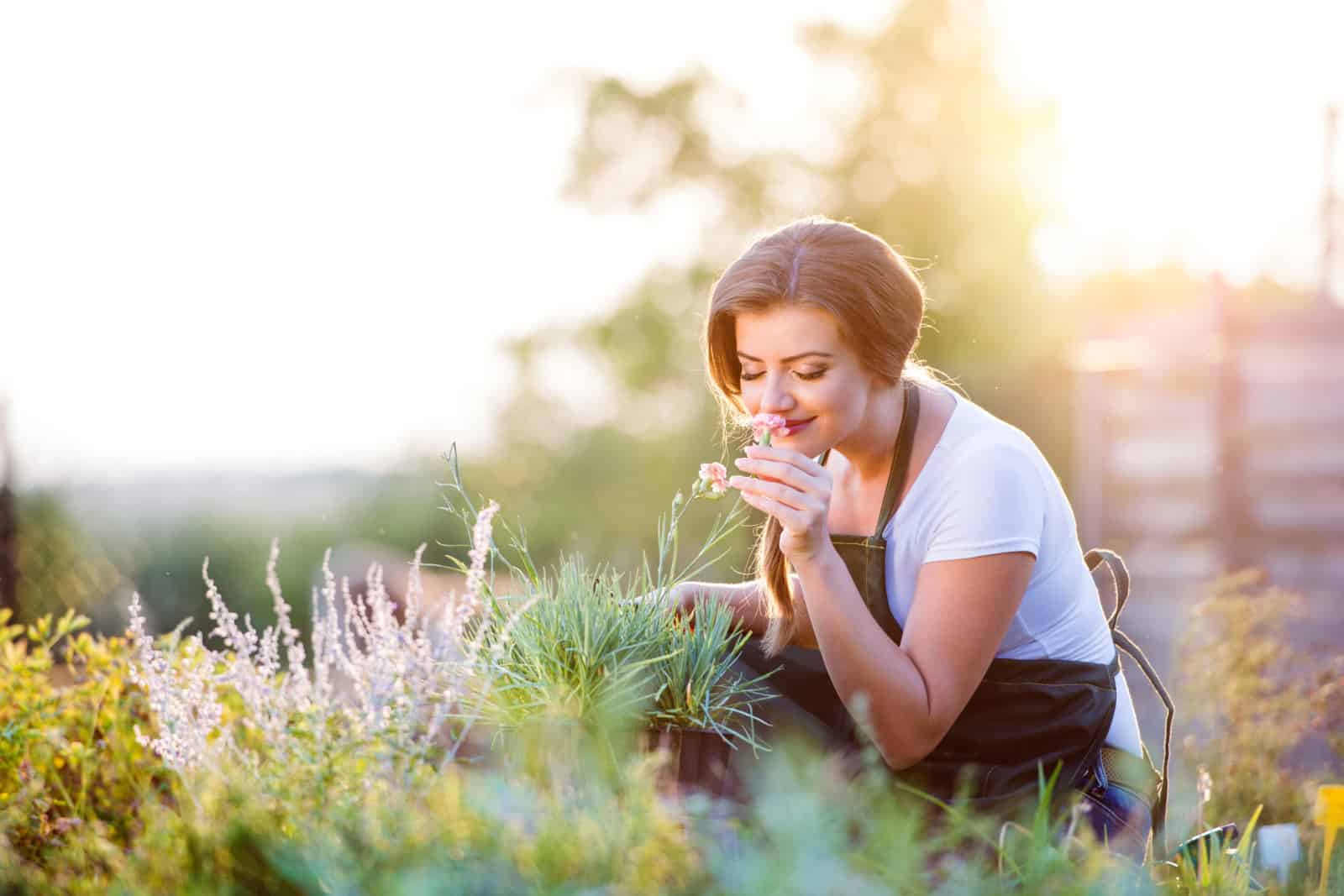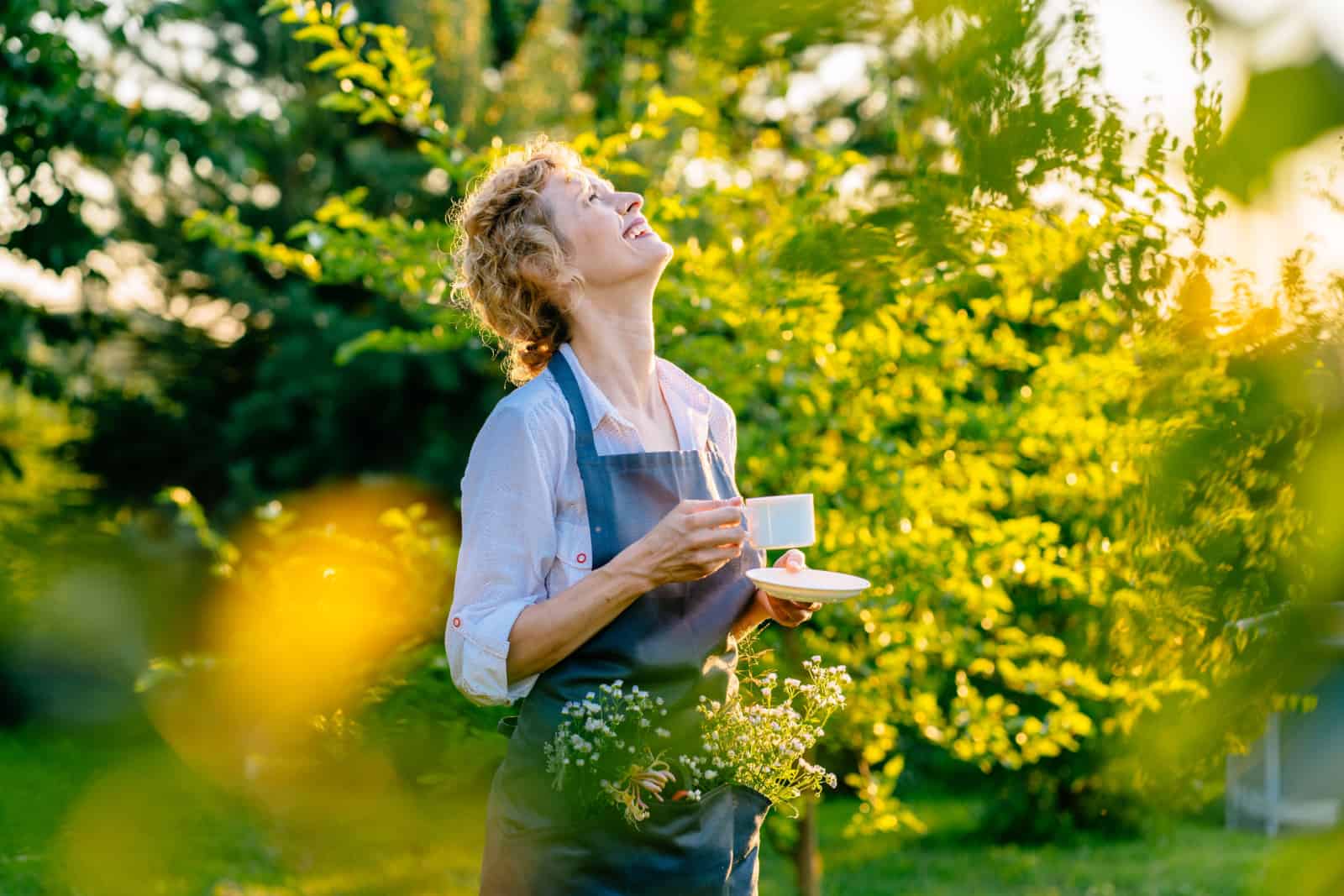Picture your dream garden, with all its colorful blossoms, water features, and winding walkways. Now imagine you’re there, hearing the hum of bees and smelling the scent of linden. Pretty amazing, isn’t it?
Looking at a garden can lift the weight off your shoulders and give you peace, but smelling it will take you to another dimension, wake up those memories you thought lost. Few experiences are more calming than the buzz of bees and the smell of scented roses.
What if I told you you can feel this way everyday? There are many scented garden ideas out there, from planting flowers that burst with fragrance all over your yard to carefully tucking one or two in your favorite place.
Here are a couple more that can inspire you!
1. Perfumed Moonlight Garden
You should plant a moonlight garden, and I’m not saying this just because it’s unique. Many flowers have their most exquisite fragrance at night when they open their blossoms, while the shimmer of others make you feel as if you’re in your own fairy tale.
So if you enjoy sunsets and have a bench or swing to watch it from, plant some night bloomers around it and create a one-of-a-kind garden.
The plants you can find in these settings are usually white and silvery, contrasting each other and creating beautiful shadows. However, pastel colors are not unheard of, so growing some lavender will make it fragrant and allow you to stay within the theme.
Other popular choices include scented white sage, night phlox, mock oranges, night jasmine, casa blanca lilies, foamflowers, and more.
2. Scented Relaxation Garden
Creating a relaxing sanctuary with an array of scented flowers is easy. Choose a quiet corner where you enjoy sipping on your coffee or watching the sunset away from the eyes of passers by.
Fill it with a host of perfumed plants and place a couple of them along your pathways. When you brush against them or crush a couple of leaves, they’ll release an even stronger scent, giving you free aromatherapy.
Lavender is perfect for making scented hedges, creeping thyme for filling gaps in between stepping stones and as a soft ground cover, and climbing jasmine for decor.
There’s not a single rule telling you which plants you should use, so plant the ones you enjoy the most. Roses, geraniums, chamomile, freesias, gardenias – everything is allowed as long as its fragrance leaves you feeling relaxed.
3. Fragrant Rose Garden
Who doesn’t like waking up to the smell of roses? If you have your own garden full of these plants, you can just open the window and let the summer take over.
We all know the scent of these flowers, but each variety has an underlying tone characteristic to it. Some are more fragrant, while others are more subtle. Some have none as they’re bred for their looks only.
You can design a rose garden in a variety of ways, including a wide range of fragrances and colors. Combine bushes with climbing varieties for more texture, or use just one of them to complement your space fully.
‘St Ethelburga’ has a strong, old-rose scent and light pink blossoms that remain open all summer long. You can combine it with the Damask rose’s classic rose fragrance for a true vintage garden.
The bushy ‘Boscobel’ rose has notes of myrrh, elderflower, pear, and almonds, and is pleasant on the eyes thanks to its salmon-pink blossoms.
And if you want some orange shades, consider the ‘Lady Emma Hamilton’ and its fruity notes.
The ‘Fourth of July’ rose is ideal for unique gardens due to its red and white petals, and sweet and spicy apple fragrance.
The last thing you need to know is how to grow roses, as proper care will make them perfumy beyond belief and give you plenty of flowers to enjoy. Prune them annually, give them plenty of sunlight, and water them deeply.
4. Seasonal Perfumed Garden
Gardens are meant to be enjoyed all year long, and the same goes for fragrant ones. We carefully plan everything when starting a regular flower patch and incorporate early, mid-season, and late bloomers. This ensures your garden stays attractive all season long.
But you can do the same for scented gardens.
Use plants with varying blooming times for a burst of fragrance from spring through fall. Jasmine, lilies, lily of the valley, wisteria, phlox, hyacinth, dianthus, sweet peas and alyssum, honeysuckle, and plumeria are just some of the options.
Add a couple of species with perfumed leaves, such as sage or lavender, that will keep it scented throughout winter.
There are also winter-blooming species such as witch hazel. Or you can plant a yellow wintersweet for more winter blossoms, and the scented sweet box, which provides greenery and life all year long with tiny, perfumed blossoms in spring.
Another thing you can do to enjoy some fragrance during the dreary winter months is dry aromatic herbs and flowers for use in potpourri and flower arrangements.
5. Fragrant Trees And Shrubs
Incorporating some vertical features, such as jasmine, columbine, or wisteria crawling up pillars, is an excellent way to add more depth to your garden.
But don’t forget about good old trees and shrubs. They’ll shower you with an abundance of flowers in spring and summer, not to mention the sweet fruit of apple trees.
Or if you just want to enjoy the fragrant blossoms, then linden, magnolias, and Japanese cherries are the way to go.
If you want some shorter shrubs, you can choose between:
• Rose bushes
• Lilacs
• Daphne
• Honeysuckle
• Butterfly bush
• Sweetshrub
• Gardenias
• Korean spice bush
• Sweetspire
• Summersweet
6. Aromatic Herb Garden
We’re all used to using herbs in the kitchen or for medical emergencies, but we also need to stop for a moment and enjoy the pleasant fragrances they offer.
I fell in love with this idea and planted a herb patch below my kitchen window. That way I could easily access them when cooking and enjoy their scent all day long.
Another option is to plant a couple of varieties in your vegetable or flower beds, or make an indoor herb garden right in your kitchen.
Recently, I came across the idea of making a herb spiral, where you create a raised bed in a spiral shape, rising as it circles around. This makes for an amazing centerpiece of your garden, providing a year-long supply of these aromatics.
Now we come to the question of what to plant. Some highly scented varieties include lavender and sage, rosemary, and mint. You can also plant various thyme varieties as they don’t fall far behind.
Plant mint separately or in a container since it can spread quickly and suffocate your other herbs. Combine it with lavender, which is perfect for walkways and hedges, and trailing rosemary, which fits perfectly into any pot.
Use creeping thyme as a ground cover or plant it in your terracotta pots. You can also combine these herbs with other fragrant flowers such as geraniums, and place them on your patio before overwintering them inside.
And don’t think I’ve forgotten about sage! This herb is perfect for attracting pollinators, whichever cultivar you chose, and is a great companion to lavender.
7. Perfect Locations For Scented Plants
Now you’ve got the idea of which plants and designs you can go with, but the location is equally important as it can make or break your scented garden.
Ask yourself, “Where will I most enjoy these fragrant leaves and flowers?”. Think about the area in your garden where you spend most of your time, paths you frequently take, or a bench or hammock you like to relax in.
Therefore, seating areas, like a patio, and spots you want to accentuate, such as doorways and windows, are ideal for this design. You’ll love the sweet smell of roses as soon as you open your window or step outside!
Another thing to consider are the needs of individual plants. Some like plenty of sunlight, while others thrive in some shade.
P.S. Scented plants can help you relax, improve your mood, engage all your senses, and create a personal oasis you get to enjoy every day. Choose a couple of species based solely on their enchanting fragrance and place them here and there, or design a full-on scented garden.
Until next time!

